Best AI App to Check Exercise Form & Prevent Injury (2025)
Did you know that since the boom in home workouts, injuries caused by improper form have risen as high as 58% in some clinics? You’ve got the space, you’re pumped, but there’s still that question in the back of your mind: “Am I even doing this right?” This uncertainty is where the biggest risk lies. Fortunately, the solution isn’t another expensive piece of equipment, but an AI app to check exercise form that already fits in your pocket, turning your phone into a vigilant personal trainer.
The Hidden Danger of Home Workouts: Why Good Form is Non-Negotiable
The convenience of working out in the comfort of your own living room cannot be beat, but it contains a hidden risk that a gym environment automatically dispels: the lack of professional supervision. Proper form is the foundation of every single exercise, ensuring you work the right muscles and, more importantly, spare your joints and spine from unnecessary stress.
The Frightening Rise of Home Exercise Injuries
Without the eye of a trainer to monitor form, it’s easy for minor errors in form to go unnoticed. A slightly rounded back on a deadlift or knees collapsing inward on a squat might not hurt at first. But repeated over weeks and months, these tiny errors compound into chronic pain, strains, and serious injury. This is not speculation; in 2021, a study identified a spike in home exercising injuries, from sprains to more severe conditions, that were directly linked to unsupervised exercising. Your pursuit of fitness should never come at the cost of your health.
The “I Think I’m Doing It Right” Illusion
Most people are certain that they can mimic exercises seen on the internet. You watch a video, you copy the movement, and it feels right. This is the illusion of competence. Proprioception—your own perception of the position of your body in space—is not always trustworthy, especially for complex movements. What feels like a straight back can be curved, and what feels like a deep squat can be several inches too high. This gap between perception and reality is the risk zone where the objective, external eye is necessary. This is precisely the problem a dedicated AI app to check exercise form is built to solve.
Your Virtual Guardian: How AI Apps Monitor Your Form
This is where technology provides a groundbreaking solution. Imagine having a personal trainer who can watch every single repetition you perform, offering real-time, corrective feedback. That’s precisely what the new generation of fitness apps does. Essentially, a good AI app to check exercise form uses the power of Artificial Intelligence directly through your phone camera.
What is AI Motion Tracking and Computer Vision?
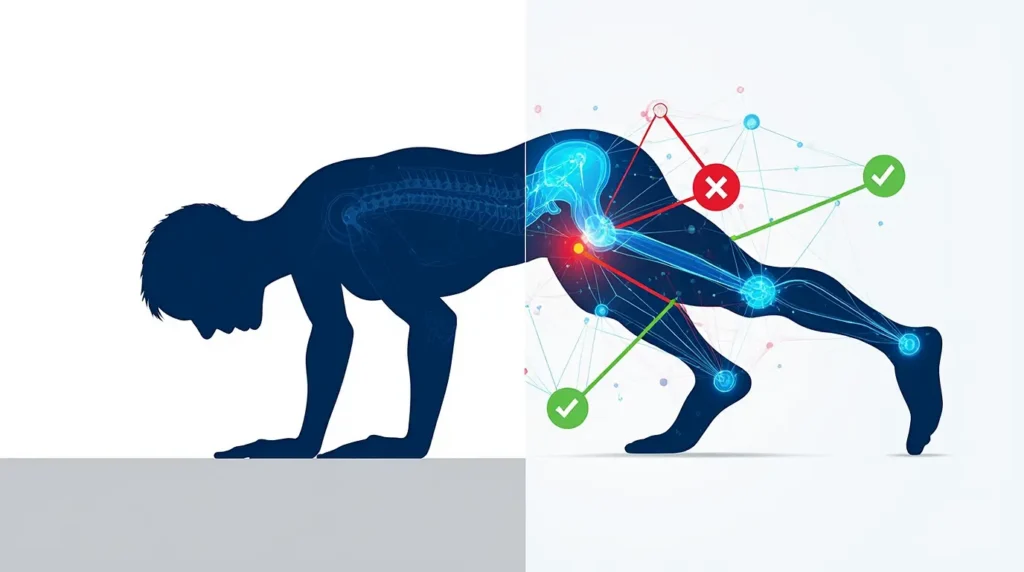
At the heart of these apps is a tech called computer vision. In simple terms, the AI is trained to recognize the human body through your phone’s camera. It captures the big points of your body—your shoulders, hips, knees, ankles—a virtual skeleton. As you move, the AI motion tracking algorithm follows these points in real time. The AI is comparing your movement patterns against a database of exercises properly executed, tracking angles, trajectories, and alignment with incredible precision.
From Your Phone Camera to Your Personal Trainer
The process is effortless. You put your phone in a position where your whole body is visible, start your exercise in the app, and the AI takes care of the rest. If your hips are too elevated in a plank, the app might give you an audio cue like “Lower your hips.” If your knees go past your toes in a lunge, you might get a visual overlay on the screen showing the area to correct. It’s an objective, data-driven feedback loop that will make each rep safer and more effective than the last.
The Best AI App to Check Exercise Form in 2025
We researched the market to find the leaders in form correction and injury prevention workout app technology. After extensive testing, we’ve compiled this list of the best AI app to check exercise form so you can choose the one that truly lives up to its hype.
1. Kemtai: The Best for Visual Feedback and Gamification
Kemtai is an excellent example of real-time form correction. It uses your phone’s or computer’s camera to monitor your movements and provide immediate, visual feedback. Its strength lies in making workouts feel like an interactive game.
- How it Works: Kemtai guides you through exercises as it tracks 44 points on your body. You get a score for each rep, and the interface shows you the exact body part that you need to correct. Gamifying form correction makes it fun and interactive.
- Best For: Intermediate users and beginners who are receptive to visual feedback, motivation, and turning fitness into a challenge to overcome.
- Price: Offers several free workouts; premium subscriptions grant access to the full library.
2. Fitbod: Best for Data-Driven Strength Progression
Fitbod is an intelligent strength training trainer that is data-driven. While its flagship feature isn’t camera-based form checking, its AI excels at creating workout plans that are personalized to avoid injury by managing volume and suggesting appropriate exercises.
- How it Works: Fitbod’s algorithm analyzes your past workouts and adjusts the sets, reps, and weight of your future session. It monitors your progress and ensures you’re not overloading specific muscle groups, which is one of the key factors in injury prevention.
- Best For: Strength training users who want an intelligent plan that will adapt to their progress and safely build muscle.
- Price: Subscription-based model with a free trial.
3. Zenith Yoga: AI Pose Coach: Ideal for Yoga and Alignment
Form corrections are crucial in yoga, where alignment is everything. Zenith Yoga is a niche application that uses your phone camera to act as an AI yoga instructor, solely focused on making your poses correct.
- How it Works: You perform a pose, and the app’s AI compares your body alignment to an ideal reference model. It provides real-time feedback on your posture, balance, and lines so you can make subtle corrections to deepen your practice and prevent strain.
- Best For: All-level yoga students who hunger for objective and accurate feedback on their poses, especially when they practice at home without a teacher.
- Price: Offers a free version with premium features available via subscription.
4. Dr. Muscle: The Go-To for Science-Based Strength Training
For those serious about building muscle based on scientific principles, Dr. Muscle positions itself as an “AI personal trainer in your pocket.” It’s less about real-time camera feedback and more about creating the most optimal, science-backed lifting program.
- How it Works: The app automates your entire workout routine, from exercises to sets, reps, rest times, and weight progression, based on muscle hypertrophy principles. As you gain strength, it modifies your routine to continue challenging you safely.
- Best For: Intermediate to advanced weightlifters who wish to outsource their programming to an AI that is designed to optimize muscle gain for safety and efficiency.
- Price: Subscription-based, typically with a free trial.
Common Errors to Watch Out for When Working With an AI Fitness Coach
These apps are powerful, yet they are not magic. While you have chosen the best AI app to check exercise form for your needs, you can still make mistakes. For the best results, avoid these common pitfalls.
Mistake 1:
Depending 100% on the App and Not Listening to Your Body The AI provides you with information, but you’re the ultimate sensor. While an AI app to check exercise form is incredibly powerful, it cannot feel what you feel. If the app says your form is good but you feel a sharp or unusual pain, stop immediately. Teach yourself to heed the messages of your body. The app is a guide, not an absolute authority.
Mistake 2:
Poor Lighting and Camera Angles For apps that use computer vision, like Kemtai and Zenith Yoga, the AI must be able to see you clearly. A darkened room, a messy background, or putting your phone in the incorrect position can significantly affect the accuracy of the AI. Always read the setup instructions within the app carefully.
Error 3:
Picking an App That Is Not Suited to Your Workout Style Do not use a strength-programming app like Dr. Muscle if yoga is your primary activity. Each app’s AI is trained on a specific range of movements. The wrong app will frustrate you. Be honest about your goals and use the tool designed for them.
No-Nonsense Tips to Squeeze the Best Out of Your AI Trainer
Tip 1:
Calibrate Before Each Workout For camera-based apps, take the extra 30 seconds to run through the calibration before beginning. Your phone placement, clothing, and lighting can all be a bit different. A fresh calibration ensures the highest possible accuracy for that session.
Tip 2:
Use the Feedback to Actually Learn Don’t passively get through the corrections. Read the session summary after your workout. If an app is reminding you to lower your hips in a plank over and over, practice that action specifically without the app. The goal is to internalize the feedback so that your natural form improves over time.
Tip 3:
Combine AI Guidance with Other Wellness Goals Your body is just half of the wellness puzzle. Take the routine you build with your AI trainer and leverage it as a jumping-off point to explore other areas. Consider how you might align your workout routine with an AI-powered nutrition plan to maximize your efforts, for instance.
Frequently Asked Questions (FAQ Section)
Do these AI apps require special equipment?
No, for the most part. The fundamental function of an AI app to check exercise form is designed to work with just your smartphone camera and your own body weight. Some applications, like Dr. Muscle and Fitbod, are designed for users with gym equipment, but it’s not a requirement for everyone.
How accurate is an AI app’s form correction?
They are incredibly accurate for most standard exercises and improving all the time. They may not catch every tiny detail a world-class human trainer would, but they are definitely capable of catching major form errors that would lead to injury. And for 99% of users, this degree of accuracy is much better than no feedback at all.
Can an AI fitness app replace a human personal trainer?
Not at all, and that is not their intention. A human trainer offers motivation, accountability, and a comprehensive plan specific to your life that an app can’t. Yet, an AI app to check exercise form is an amazingly effective and inexpensive tool for daily form check-in—a thing a human trainer cannot possibly do 24/7. They are best viewed as a supplement to, rather than a substitute for, human expertise.
What about my data privacy when the app is using my camera?
Fair question. Responsible apps perform the processing of the video stream directly on your device (“on-device processing”) or utilize anonymized data not linked to your identity. Always read the privacy policy before subscribing. Opt for apps that are transparent about what they’re doing with your data and give you control over it.
Conclusion
Ultimately, the future of fitness is about creating a partnership between human intention and smart technology, and finding the right AI app to check exercise form is a major step toward a safer and stronger you.

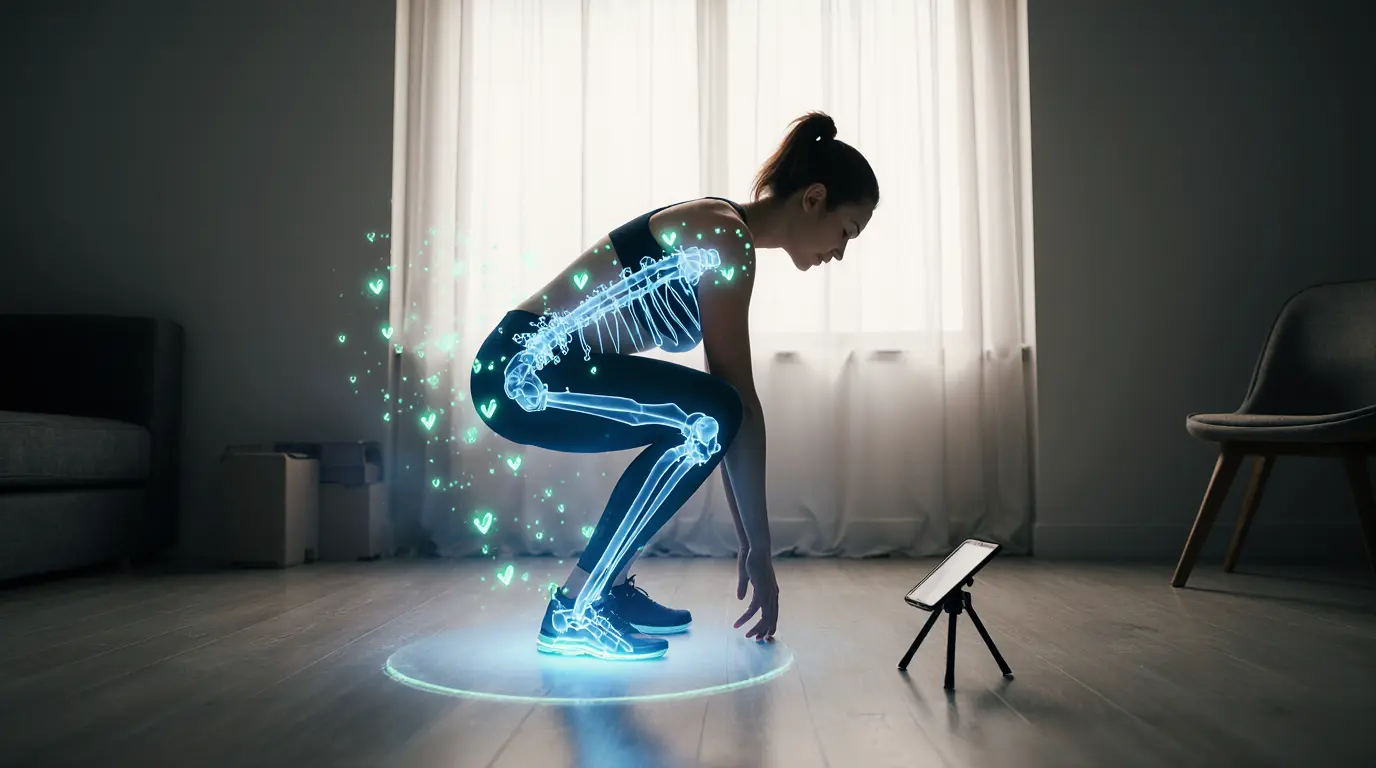
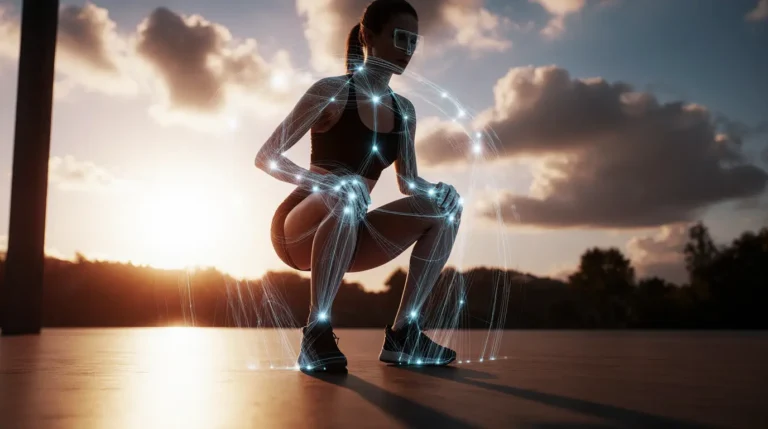

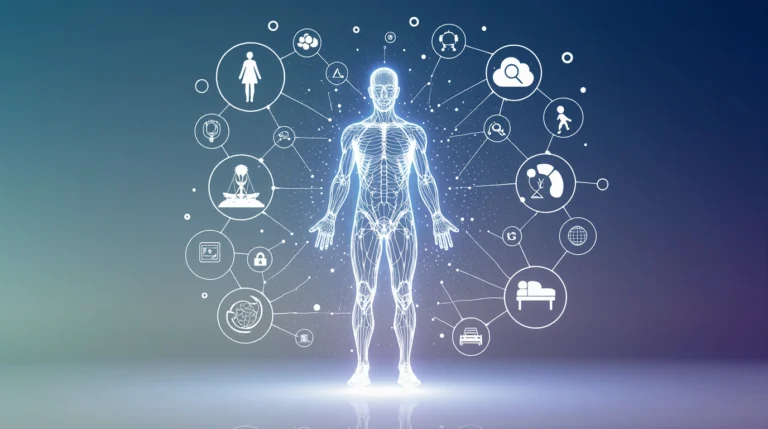


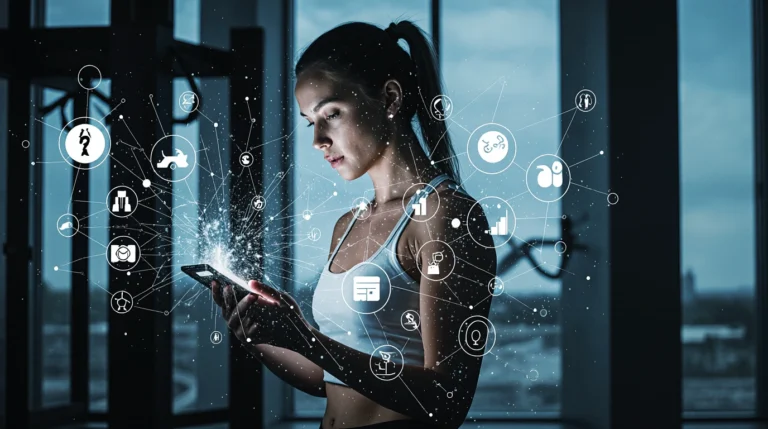
3 Comments